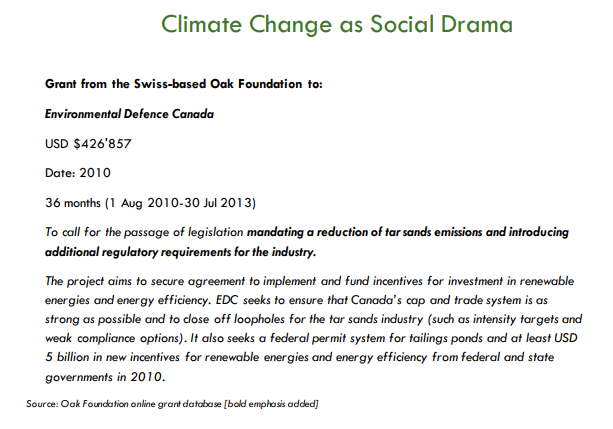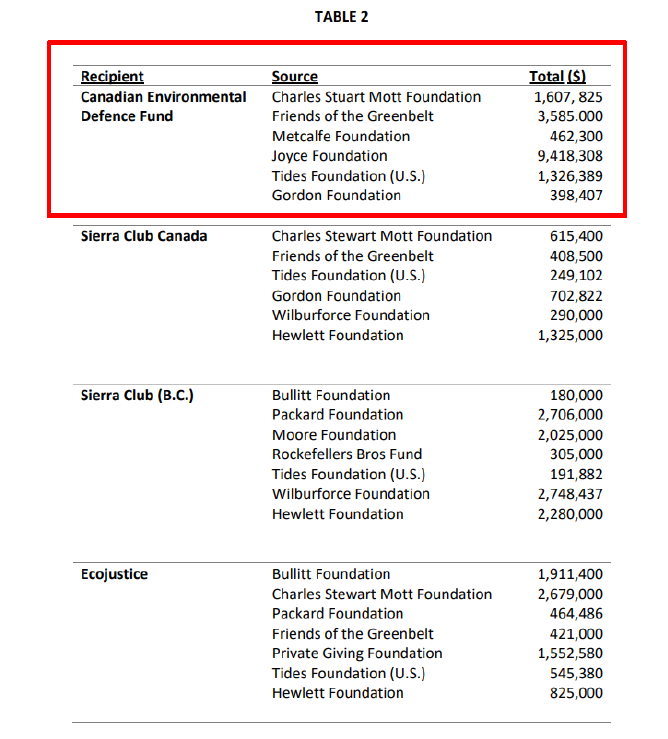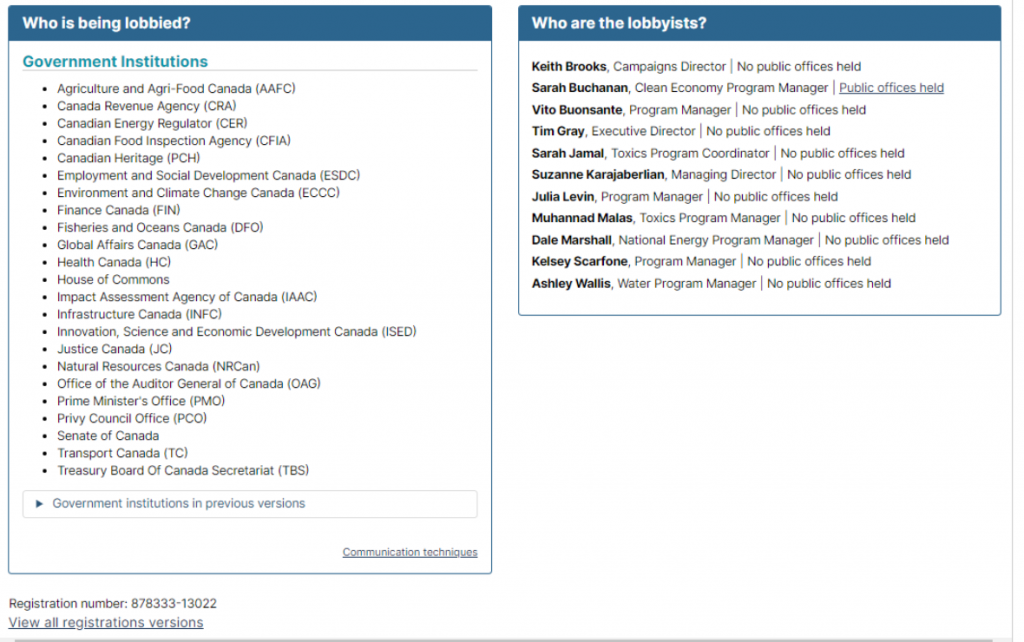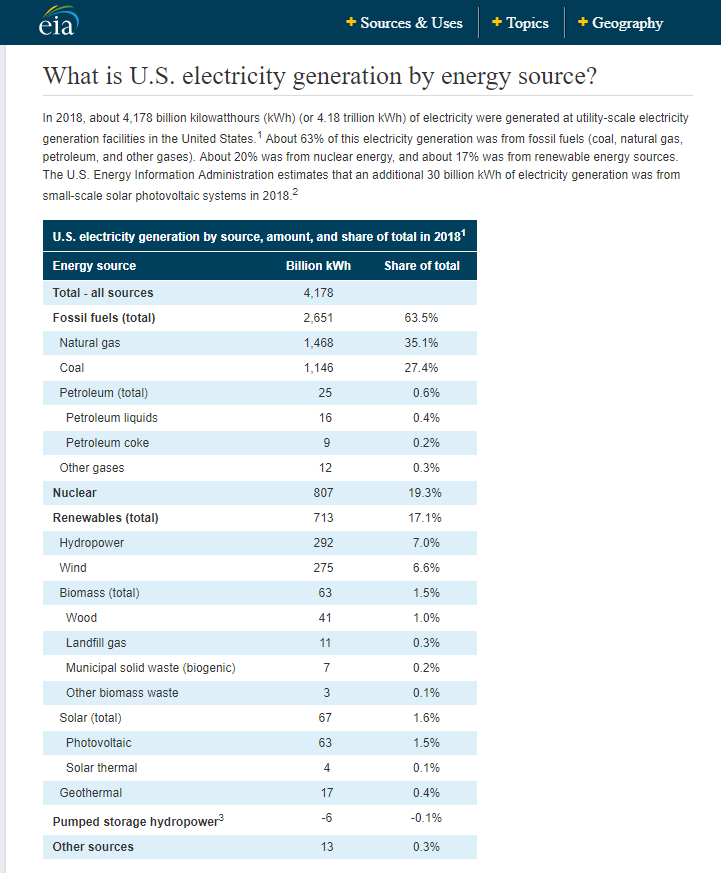An Open Letter
University of Alberta
ATTN: Prof. Bill Flanagan, President
Dear Sir,
RE: An Open Letter – Call for retraction due to false statements about Friends of Science Society and inaccurate information on wind farms published in “Assessing Barriers to Renewable Energy Development in Alberta: Evidence from a Survey on Wind Energy with Rural Landowners” Authors: Sonak Patel, Monique Holowach, Sven Anders, John R. Parkins
Friends of Science Society is a non-profit society in Alberta, founded and operated by volunteer retired and semi-retired Professional Geoscientists, Professional Engineers, solar scientists, atmospheric scientists, and citizens. The organization’s objectives are to provide insights on climate science and related energy policies to inform the public and policymakers and to advocate for full cost-benefit analysis of proposed policies.
Many of our members are alumni of the University of Alberta – especially geosciences, engineering, and business management.
In the May 2020 publication named above, several false statements were made about Friends of Science Society. It is very surprising that grad level students made false assumptions based on articles in the press and their own biases instead of sending an inquiry directly to Friends of Science Society, an organization located in Calgary and offering a toll-free contact number and email.
We request a retraction of the aforementioned paper for the reasons in the attached document.
Sincerely,
Michelle Stirling
Communications Manager
Friends of Science Society
Errors and False Statements in “Assessing Barriers to Renewable Energy Development in Alberta: Evidence from a Survey on Wind Energy with Rural Landowners”
- Misquoting Friends of Science Society’s position on Climate Change
In the first place, the authors misquote Friends of Science Society’s position on climate change. We agree that humans affect climate change, but the evidence shows that natural forces are more powerful. We agree there has been warming since the end of the Little Ice Age (~1860), we agree that carbon dioxide from human industrial activity has a nominal warming effect, but the climate sensitivity (warming effect) of carbon dioxide is now deemed to be small.
- Misrepresenting the science on Extreme Weather
The Intergovernmental Panel on Climate Change (IPCC) issued the SREX report in 2012 which confirmed that there is little evidence that weather extremes are caused by human influence on climate.
One of our key scientific advisers is Dr. Madhav Khandekar, a former U of A professor of atmospheric sciences. In 2000, Dr. Khandekar conducted a literature review for the Alberta government, assessing the Uncertainties in Greenhouse Gas Induced Climate Change. In a recorded interview in 2018, Dr. Khandekar stated that those uncertainties are still the same and that there are many more.
Dr. Khandekar’s presentation at our 2018 event was “Climate Change and Extreme Weather: Perception vs Reality”, wherein he shows that extreme weather events are integral to climate. In a warming world, Polar Regions are expected to warm faster than tropical regions, reducing the temperature gradient that powers storms. A warmer world should have fewer, not more, severe storms.
The frequency trend of strong +F3 tornadoes in the USA has declined by 57% from 1958 to 2019. The frequency of all global hurricanes has also declined since 1980. Global hurricanes’ total energy exhibits decadal variability but show no increasing trend. Global drought has been declining since 1972. See our Extreme Weather information here and here.
- Misrepresenting Friends of Science Society by claiming the organization is ‘anti-climate action’ or that the group spreads ‘misinformation’
Friends of Science Society has been engaged on the public debate on climate change and related policies since the days of the Kyoto Protocol. The Association of Professional Engineers and Geoscientists (APEGA) published this debate in their journal “The Peg” in 2002, featuring astrophysicist Dr. Sallie Baliunas, earth scientist Dr. Tim Patterson, and Allan McRae, P. Engineer, debating with two members of the Pembina Institute. You will note that Pembina Institute simply argued the IPCC political line which Baliunas, Patterson and McRae argued the science. Dr. Baliunas and Dr. Patterson were our first scientific advisors.
The Sun is the main driver of climate change as it affects all climatic processes on earth. The Sun’s solar wind varies in response to gravitational effects of conjunctions of the major planets. The solar wind affects low cloud formation and ozone in the upper atmosphere, both of which likely affect surface temperatures more than the direct changes in solar heat output. Solar cycles vary on timescales ranging from the 11-yr cycle to thousands of years.
As well, there are cyclical patterns within earth’s climatic system, including ocean cycles of multi-decades to thousands of years. The Earth has been warming in part since 1970 due to the millennium warming cycle from the Little Ice Age, and the positive phase of the Atlantic Multidecadal Oscillation (60 years), and poorly researched subliminal geothermal activity in the oceans which appears to affect sea ice variability and regional atmospheric warming.
The climate sensitivity to increasing CO2 can best be estimated by the energy balance method which compares the Earth’s historical warming net of natural climate change and urban warming to greenhouse gas forcings. When this is correctly done, climate sensitivity is found to be about 1.0 °C per doubling of CO2, which is less than a third of the average of the climate models of 3.2 °C as reported in the IPCC’s fifth assessment report. Climate models over warm the Earth’s surface by a factor of two since 1980. The increasing CO2 fertilization effect on crops and the net benefits of warming increase the global wealth by over a trillion US dollars/year by 2100.
Friends of Science Society is ‘pro-climate science information’ and opposed to poor climate or energy policies based on myths that humans can control the climate of earth by taxing people.
- “Assessing Barriers…” commenting on topics outside their field of expertise
It is curious that grad students and professors who are not in the physical sciences, presume to pass judgement on the work of Professional Geoscientists, Professional Engineers, atmospheric and solar scientists, when they are not academically qualified to make such judgements.
- Making unwarranted, derogatory, and inaccurate statements about Friends of Science Society’s motives
The “Assessing Barriers…” report goes on to suggest that Friends of Science Society is “motivated by the financial gain of reducing climate action regulation.” As a non-profit society, operating on about $150,000/yr. from individual member/subscriber donations, the society cannot cause any financial gain for its members.
The authors of the “Assessing Barriers…” report reveal a poor level of research by citing claims in the press that Friends of Science Society were creditors of the Peabody Energy bankruptcy, when in fact, Friends of Science Society’s name only appeared in the ‘cull’ list of the bankruptcy trustee (i.e. at the outset of a bankruptcy, all emails of an organization are culled and parties notified of the bankruptcy to determine creditor status).
The only reason Friends of Science Society’s name was in the Peabody email register, is that in 2014, we had sent this rebuttal to Peabody, responding to a Greenpeace intimidation attack on corporate directors/executives. This is a form letter that was sent to as many of the corporations as we could find from Greenpeace documents.
This is the concurrent press release from 2014.
Had the researchers contacted Friends of Science Society directly for confirmation of the press claims, we could have provided them with this evidence.
A search of the Peabody creditors did not find Friends of Science Society listed as a creditor.

The same search revealed that the Sierra Club was a creditor of Peabody.
- Making false statements about Friends of Science Society’s origin and funding
The authors of “Assessing Barriers…” claim that Talisman Energy, then a Calgary-based oil company, funded the creation of Friends of Science Society. This is false. Talisman financially supported the production of a documentary, for which Friends of Science Society were volunteer script consultants, featuring numerous scientists, discussing how climate change is driven mainly by the sun, with carbon dioxide having a lesser impact. Talisman Energy’s then CEO, Dr. Jim Buckee, holds a PhD in solar physics from Oxford University.
Friends of Science Society was founded by a group of retired and semi-retired scientists and funded by member/subscribers who subsequently joined. In 2015, Ecojustice, on behalf of a bevy of climate activists, demanded that the Competition Bureau investigate Friends of Science Society as a ‘front’ for industry with ‘deep pockets’ and for misleading statements on our billboards. Competition Bureau did not find such evidence.
- Misplaced concern about Friends of Science Society’s alleged influence on public opinion – no due diligence by authors of “Assessing Barriers…”
The authors of “Assessing Barriers…” also reference Mittelstaedt’s article in the Globe and Mail wherein Environmental Defence is quoted as saying:
Rick Smith, executive director of Environmental Defence, a Toronto-based conservation advocacy group, contended that a national advertising campaign would be beyond the reach of any organization relying on small, individual donations.
“We’re a shoe-string operation running on small donations and there is no way in hell that we can afford the kind of advertising campaign they’re undertaking,” he said.
Environmental Defence, which is also a non-profit, reveals the names of those who give donations of more than $500 in its annual report.
In fact, Environmental Defence at the time, according to their 2009-2010 Annual Report, had $3,534,444 in tax-subsidized revenues (a federally registered charity, not a non-profit), far surpassing Friends of Science Society’s annual ~$150K. Environmental charities were not permitted to spend funds on similar public advertising at that time. Likewise, as a registered charity, since donors receive a tax deduction, names are published. There is no such reporting requirement for a small non-profit like Friends of Science Society as there are no tax benefits to individuals who support us. Most Friends of Science donations are under $500.

Environmental Defence was also a recipient of substantial foreign funding to participate in the economic ‘green’ trade war operating under the guise of the Tar Sands Campaign, which has destroyed Alberta’s economy and put thousands of highly trained, skilled University of Alberta alumni out of work. The Tar Sands destruction of the Alberta oil sands reputation has also devastated the University of Alberta’s funding base.

Foreign funding to Canadian environmental law ‘charities’.
Environmental Defence has a large staff and substantial budget, according to Blumberg’s Charity Data.

Environmental Defence also has 11 registered lobbyists in Ottawa. Friends of Science Society has none.
In light of the above, it is curious that these University of Alberta professors and grad students state that “Concerns about anti-climate action interest groups spreading misinformation are pressing in Alberta….” When it is obvious that the more pressing concern is the foreign funded, taxpayer subsidized, ENGOs, spreading false and misleading information about the Alberta oil sands, and pushing ineffective, unreliable, expensive “renewables” like wind and solar and the foreign ClimateWorks “Design to Win” cap and trade/price on carbon campaign, acting as an apparent “grassroots proxy” for foreign interests.

According to the UofA website, the grant for the report “Assessing Barriers…” is associated with a Social Science and Humanities Research Council Insight Grant:
Imagination, expectation and deliberation: Pathways to wind energy landscape transitions in Alberta. Social Science and Humanities Research Council (SSHRC), Insight Grant, $199,730 (2017 – 2021). PI: Parkins (Alberta). Collaborators: Anders (Alberta), Sherren (Dalhousie), Davidson (Alberta)
It is alarming that the document “Assessing Barriers…” did not have to go through technical peer-review by power generation engineers, particularly as the University of Alberta’s reputation is at stake and the SSHRC grant money comes from taxpayers.
- Misrepresenting Alberta’s renewable market
“Assessing Barriers….” Stated in the abstract that “…the Province of Alberta is slow to adopt wind energy.”
In fact, the first wind farm in Canada was built in Alberta in 1993, some 27 years ago. Alberta also the first jurisdiction in North America to legislate mandatory greenhouse gas reductions, the first in Canada to mandate greenhouse gas reporting, among other climate and environment initiatives, in the Climate and Environment Legislation of 2003. Alberta was the first province in Canada to have a Ministry of Environment.
By 2005, the Alberta Electric System Operator was signalling one the key problems of wind/solar renewables for on-grid operation – that being, you need equivalent conventional back-up for every MegaWatt installed – and that transmission line upgrades would be required.

The addition of wind farms to Alberta’s grid, far from being ‘free’ and renewable’ has resulted in the need to build a $2.2 billion transmission line from Calgary to Pincher Creek wind farms and the $1.4 billion Shepherd Energy Centre combined-cycle natural gas plant in Calgary. It costs about $1 Million/MW to integrate wind to the grid. These additional costs are passed on to consumers, ultimately causing heat-or-eat poverty. There are Dire Consequences to early coal phase-out and carbon pricing for Albertans, including the billions of dollars in penalties due to botched management of the process, resulting in billions in compensation required to be paid to wealthy corporations for years on end. The carbon pricing that was supposed to underwrite the renewables incentives is an albatross around the neck of Albertans.
According to a 2012 Morrison Park Advisors report for the Market Surveillance Authority of Alberta, there was no investor interest in wind and solar in Alberta because Alberta’s power prices were too low. Obviously, the advent of wind/solar promoters and investors in Alberta means the market mechanisms will raise the prices of power and provide various forms of subsidies, all from tax payers for unreliable, intermittent, energy forms that do not address climate change and that cannot support even basic society.
The Wind Power Production Incentive program was set up to help establish wind energy in Canada by providing a financial incentive of about 1 cent per kilowatt-hour produced from the installation of up to 1,000 megawatts (MW) of new wind power capacity in Canada by 2007. Eligible recipients claim payment of the incentive over a 10-year period. The program contributes to the production of new electricity from wind energy projects. The program approved 22 wind projects for a total capacity of 924 MW.
NOTE: The total contribution funding for the program is $324 million, of which $314 million has been committed to wind projects. Actual spending will be spread out over several years until 2016-17. The initial Wind Power Production Incentive program G&C budget was $254 million and an additional $69.9 million was allocated in 2005-06.
https://www.nrcan.gc.ca/nrcan/transparency/reporting-accountability/plans-performance-reports/wind-power-production-incentive-contribution-program/17057
Regarding the future of the NDP climate plan to put 30% renewables on the grid, ironically the AESO presented this long-term forecast in the winter of 2017 at an engineering managers luncheon showing that most of the reliable renewable energy would come from combined heat co-generation, most of which is produced by the oil sands.

- Disregard for serious environmental damage by wind farms; damage to humans and property value
It is very surprising that people in the University of Alberta Department of Resource Economics and Environmental Sociology do not account for the devastation to rare raptors and slow-breeding bats, killed by wind farms.
University of Calgary research shows that bats that approach wind turbines have their lungs exploded by the change in air pressure. Bats are a crucial part of the agricultural ecosystem, devouring millions of pestilential insects, but they are also slow breeders.
Likewise, these U of A social scientists have no regard for the human suffering caused by wind farms destroying the health, property values, land and lives of rural Albertans, many of whom strongly oppose wind farms, contrary to the claims of the report. The authors have no regard for the destruction of rural China where neodymium is mined, the people now live in a toxic wasteland.
- Lack of due diligence on wind, solar and geothermal for Alberta
Even in the United States, the world’s largest power generation market for geothermal (0.4%) and one with decades of massive investments in wind (6.6%) and solar (1.6%), these provide nominal sources of power.

We have a number of plain language resources on alternative energy options and related pitfalls and challenges.
In conjunction with Friends of Science communications team, Alberta power generation experts have compiled this report “In the Dark on Renewables” on the issues with wind and solar. Video overview.
Robert Lyman, former public servant who spent years working on greenhouse gas and energy related policies for 27 years and a diplomat for 10 years, has compiled a series of reports on renewables:
Broken Promises: Why Renewables Offer No Resilient Recovery – Part 1
Empty Wallets: Why Renewables Offer No Resilient Recovery – Part 2
Empty Pockets: Why Renewables Offer No Resilient Recovery – Part 3
Grid-Scale Battery Storage – An Anecdotal Review
Several Professional Geoscientists collaborated on the compilation of this document:
“Geothermal for Alberta? A Case for Caution”
And regarding climate change per se, two reports rebut claims of an impending climate emergency.
“Facts vs Fortune Telling: Alberta’s Climate Future Report Review”
“Faulty Premises = Poor Public Policy on Climate” – responding to IPCC SR1.5
In Closing
We request that “Assessing Barriers…” be retracted for the foregoing reasons.
Far from Friends of Science Society being a minority voice, some 900 international scientists and scholars who are signatory to the CLINTEL – Climate Intelligence declaration, hold similar views on climate change science and policy to those held by Friends of Science Society for the past 18 years. It may be wise for the University of Alberta to consider adopting CLINTEL’s “Magna Carta Universitatum 2020”.

We hope you will enjoy our billboard campaign, presently running in Edmonton.
Sincerely,
FRIENDS OF SCIENCE SOCIETY
What a brilliant response; it should make headlines in many places in the western World. I increasingly hope that the multiplicity of false claims from the other side of the hill will eventually wake someone up in government. However, I’ll be very interested to know if you get more than … even .. an acknowledgement from the learned Professors and their acolytes.
Best wishes to all Friends of Science
Great response. Hope you can mobilize UofA alumni to support your efforts, thru letters and phone calls.
Excellent job Michelle,we’ll wait eagerly for the response from the social butterflies at the U.of A.
Being a UA grad myself, its disturbing to see such poorly researched and low scrutinized drivvel coming from it. Where are the scrutinizers or peer reviewers? Such an error filled publication should never have been publicly released, especially given it was funded by a federal grant!
Good one, and thank you. This will be useful as I have come across a number of criticisms of the group and can now answer them better informed.
You should have a serious look at this:
New Study Finds Robust Statistical Probability Temperature Drives CO2 Changes, Upending ‘Scientific Perception’ https://notrickszone.com/2020/10/05/new-study-finds-robust-statistical-probability-temperature-drives-co2-changes-upending-scientific-perception/